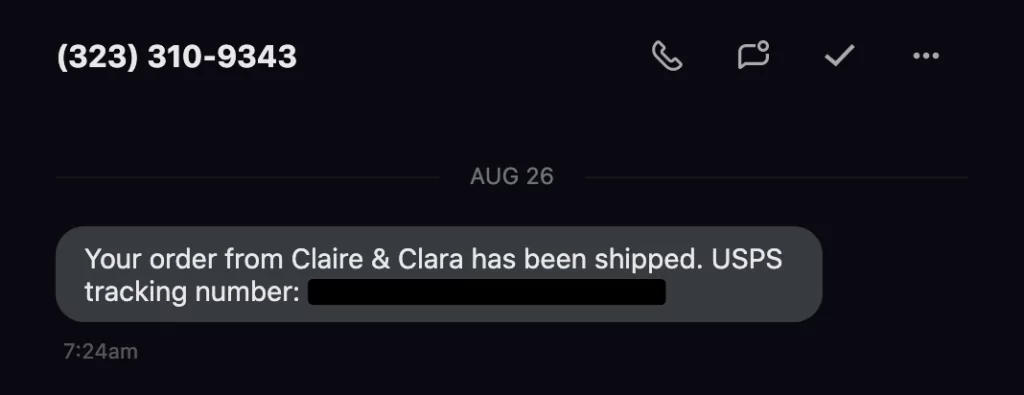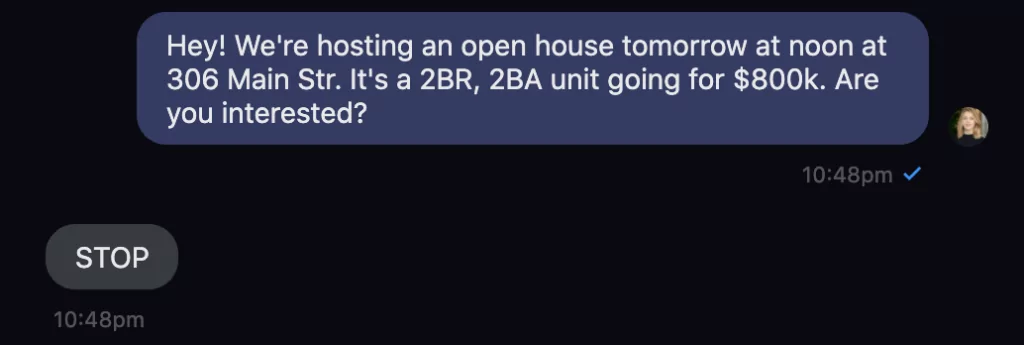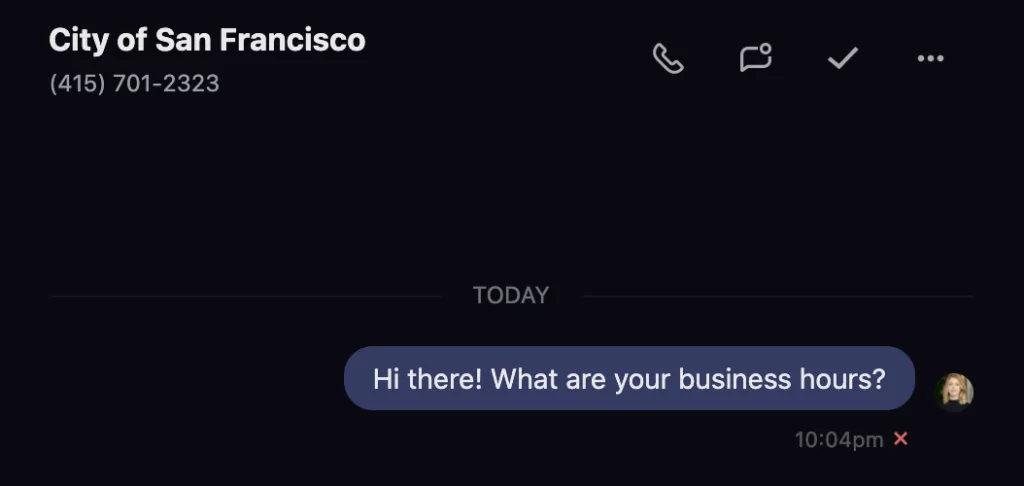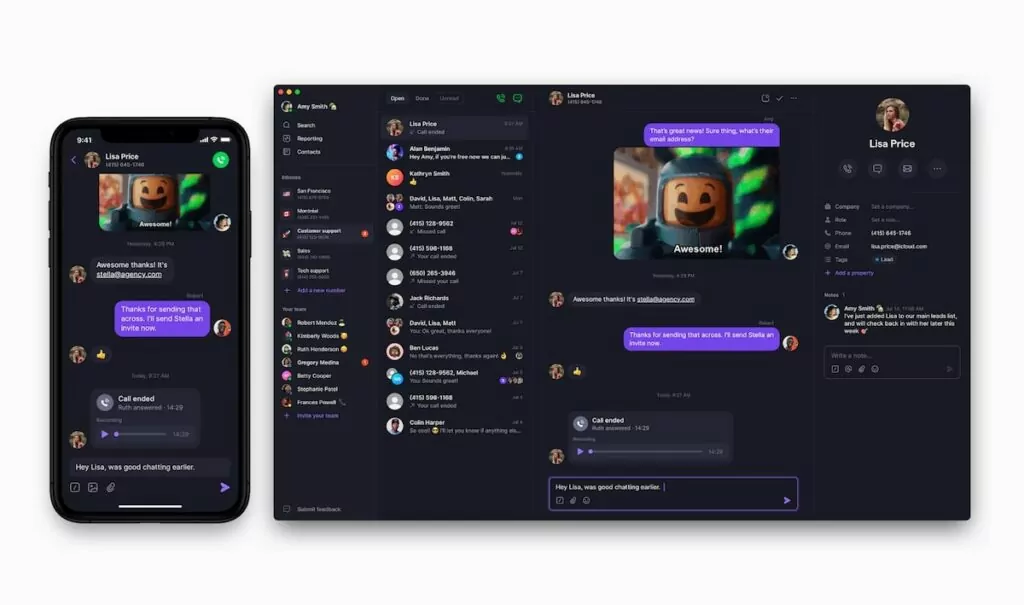In the world of read receipts, emoji reactions, and “someone is typing”, not getting your text message delivered is frustrating. Especially when you don’t know why that happened.
Why does my message not say delivered?
Your text message may not say ‘delivered’ due to several reasons. The recipient’s phone might be switched off or out of service range. The recipient might have blocked your number. Or, the carrier might be experiencing technical difficulties. It’s also possible that you’ve entered an incorrect or non-working phone number.
We’ve seen them all and will share what we’ve learned in this post.
Here are 11 reasons why your message didn’t get delivered.
1. Your message was flagged as Spam by the recipient’s carrier
With the rise of text messaging, carriers started protecting their subscribers from SMS spam. Similar to how your email provider moves messages they think are suspicious to the Spam folder, your mobile carrier does the same. Except those text messages don’t get delivered to you at all. They simply get filtered out by your carrier.
When you’re texting someone for the first time, keep in mind that your message can get filtered out. This happens when something in your message raised a flag for the recipient’s carrier.
While many carriers have their own guidelines and methods for fighting spam, some principles are universally followed.
Here are some of the common reasons why messages get filtered out:
- You’re sending suspicious links, especially if you’re using a URL shortener like bit.ly, tiny.url, etc.
- You’re sending a lot of messages with the same content.
- You’re sending overly long messages. Every SMS segment is 160 characters long so if you’re sending an essay, that’ll raise a red flag for the receiving carrier.
- Using all caps in your messages like “SIGN UP NOW FOR FREE”. This both looks suspicious and isn’t effective.
If you’re texting from a virtual phone solution, your text may also get filtered by your recipient’s carrier based on new guidelines pushed for by the large US cell companies. The major US cell carriers pushed for anyone with a local phone number (non-toll free number) and using a virtual phone solution to get verified through The Campaign Registry, a third-party organization handpicked by these carriers. If you haven’t already registered and use OpenPhone, you can get verified through the US carrier registration form.
💡 Looking for a more reliable service provider? Check out our guide to the best texting services.
2. You need a different type of phone number
There are two types of messaging — A2P (application-to-person) and P2P (person-to-person). And these types require different kinds of phone numbers.
If you’re a business sending messages to your customers, there’s a chance you’re engaging in A2P 10DLC messaging. Appointment reminders, billing confirmations, and other transactional texts are considered A2P.
If you have a personal relationship with your customers and are not sending templated or automated messages, you’re likely engaging in P2P messaging. This means you’re texting them like you would text a friend.
If A2P describes your use case best, you need to make sure you have an appropriate type of phone number for it. Shortcodes and certain local numbers approved for high-volume messaging (known as 10DLC or 10-digit long code) will work here. Using a regular local phone number to send hundreds or thousands of messages in a short span of time will get your messages blocked by the carriers, especially if you’re not compliant with 10DLC.

If P2P describes your use case, you’ve got nothing to worry about. As long as you don’t send hundreds of messages in a short span of time, you’ll be all set.
If you’re looking to send a high volume of messages, send us a note, and we’ll be happy to help find a number type that suits your needs.
3. You’re sending too many messages
Similar to the point above, if you’re sending a lot of text messages and are doing SMS blasts, your messages might be caught in the spam filter. There are guidelines around how many messages you can send depending on the number you’re using.
Phone numbers designated for P2P traffic (typically your local numbers on a cell phone) are generally only allowed to send 1 message per second. There should also be a fairly even one-to-one balance of sending and receiving messages. If you’re sending 300 messages but only getting 10 responses, that’s a red flag and can result in your messages getting blocked.
4. The recipient opted out of messages
Most platforms offering SMS have a built-in system for recipients to opt out of messages.
In OpenPhone, if someone texts back “STOP,” they will no longer be eligible to receive texts from you. Unless they opt back in, you won’t be able to message them.

5. The recipient blocked your phone number
While this is rare, it happens. If the recipient blocks your phone number from contacting them, your message won’t be delivered. If you don’t see a ‘Delivered’ or ‘Read’ notification, this is a likely explanation.
6. The message contained illegal content
If you’re sending messages with illicit content, such as adult content, references to drugs, or anything referring to criminal activity, they can get blocked by the receiving carrier. CTIA (Cellular Telecommunications and Internet Association) is a regulatory body that enforces guidelines for SMS messages. You must ensure that the content of the messages you send complies with all applicable laws of the jurisdiction in which the message recipient is located.
7. You’re texting a landline
Despite all advances in technology, there are still phones that look like this ☎️. They don’t support messaging and are limited to calls only. If you’re texting a landline, your message is most likely not getting delivered.

8. Network problems with the recipient’s carrier
While not that common of an issue, sometimes there are problems with the recipient’s carrier network that can halt delivery.
9. Billing issue on the recipient’s carrier side
Although this rarely happens, it’s possible that you’re texting someone on a pre-paid plan who has an outstanding balance on their account. Many carriers offering pre-paid plans block these accounts from receiving messages until the balance is paid.
10. Recipient reported your message to their carrier
If you’ve followed all the tips above and still had a message undelivered, there’s a chance a recipient reported your message to their carrier. It’s also possible they reported a message that looked very similar to the one you sent, so their carrier preemptively blocked your message.
11. You’ve entered a wrong number
You’d be surprised how often this happens. Out of ideas? Make sure you’ve entered the number correctly. Especially if you’re messaging international numbers.
Get more reliable texting with OpenPhone

Hope this post sheds some light on the mysteries of SMS deliverability. We love helping professionals communicate seamlessly so if you have any questions or just want to get advice on your SMS-related questions or issues, send me a note.
If you’re looking for a simple and reliable solution for texting, check out OpenPhone. We’re building a modern business phone for small businesses and startups. It works right on top of your existing devices (via an app). We’ve got a free trial so check it out for yourself and let me know what you think!
FAQ
There are a number of reasons why an SMS message might not get delivered, but some of the most common are:
the recipient opted out of messages
the recipient blocked your phone number, the message contained illegal content
there were network problems with the recipient’s carrier.
Whether you’re an individual looking to send a group SMS or a professional needing to communicate with your team on the go, there are plenty of reasons why messages may not reach their intended recipient.
When you see that an SMS message is undelivered, it means the carrier couldn’t deliver the text to that phone number.
To ensure you don’t send out a text that never makes it to its recipient, make sure all your contacts have a valid number and that they’re not using a device that doesn’t support texting such as a landline phone. To proactively handle this, if they are opting into receiving texts from you, the field in your form can say “Cell phone number”.
If you’ve confirmed you have an active connection (through your, mobile, data plan, or WiFi) and are still not able to send a message, your contact may have opted out of receiving messages from you. When you’re confident that’s not the issue, consider checking with your contact via email that you have the correct phone number on file.
